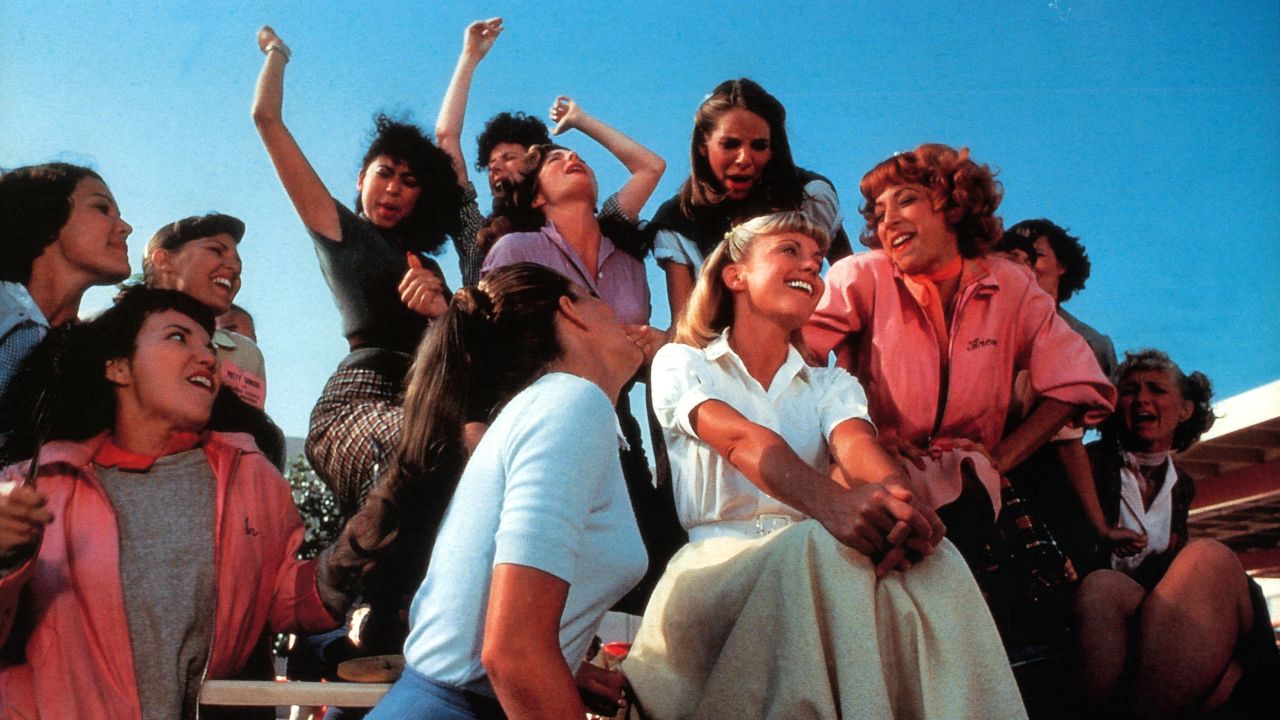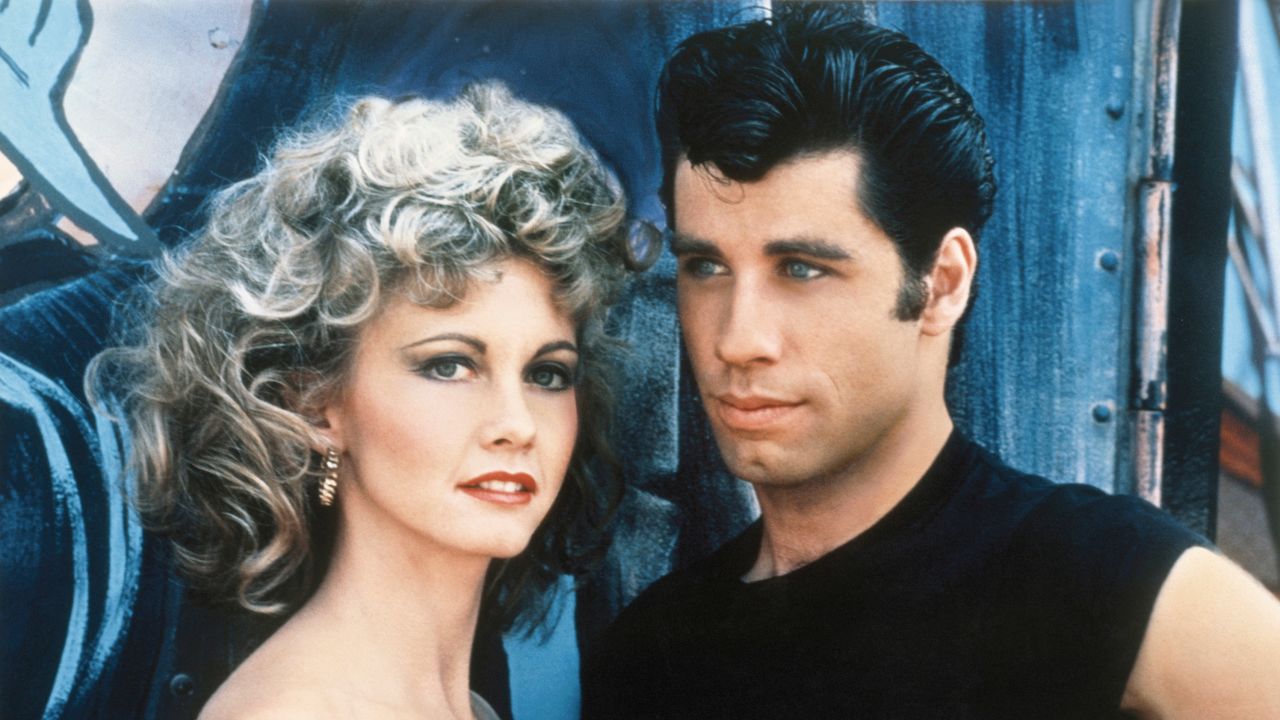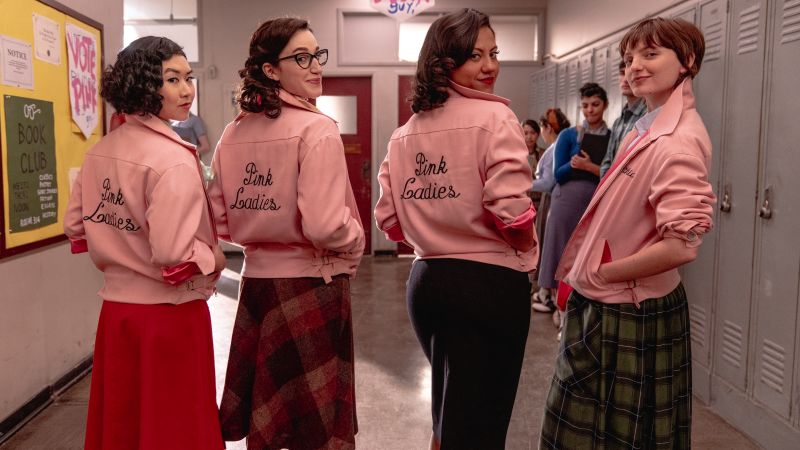Editor’s Note: Ani Bundel has been blogging professionally since 2010. A DC native, she is the associate editor and podcast co-host at WTEA/PBS’ British TV website, Telly Visions. Find her on Twitter @anibundel. The opinions expressed in this commentary are the writer’s own. View more opinion on CNN.
CNN
—
It’s been 45 years since “Grease” hit the big screen in 1978. At the time, it was already a nostalgia play for an era that was fast receding. Adapted from a Broadway musical that debuted in 1972, the 1950s-steeped movie depicts the unlikely romance between the stereotypical goodie two-shoes girl of the era, Sandy Olsson, and the Elvis-esque greaser bad boy Danny Zuko. Yet its reincarnation this Thursday as a Paramount+ musical TV series could not be more timely.

Paramount was actually a trailblazer when its 1970s “Grease” producers envisioned an entire franchise based on the hit film (whose initial release took in some $740 million worldwide in today’s numbers) in the form of multiple movies. That may not sound all that innovative in the 2020s, when the gaping maw of streaming must be constantly fed and IP juggernauts like Marvel and “Yellowstone” are wrung for all they’re worth. In 1978, however, such wide-scale ambitions were ahead of their time.
Unfortunately, the company’s forward-thinking wasn’t rewarded by viewers, perhaps because the follow-up film in 1982 — the now-cult-hit “Grease 2” — was also ahead of its time. It flipped the gender roles to star Michelle Pfeiffer as tough girl Stephanie Zinone, leader of girl gang the Pink Ladies, with Maxwell Caulfield playing Michael Carrington, a soft and prim exchange student. The formula was soundly rejected, as were the much-closer-to-R-rated musical numbers.
Now, though, audiences are primed for nostalgia franchises and are craving edgier, diverse, more socially relevant fare. This iteration of “Grease,” subtitled “Rise of the Pink Ladies,” achieves all that by, ironically, staying much closer to the source material.

Set four years before the original film’s events, “Rise of the Pink Ladies” repositions the members of the titular girl gang as the series leads and reframes the posse as what it represented in the era: a radical feminist act. In a decade in which pop culture told women their greatest achievements were to be asked to “go steady” or to wear a boy’s lettered jacket, these pink-parka’d girls were doing it for themselves. (Considering the ultimate message of the film is “change everything about yourself to keep your man,” it’s perhaps not surprising that generations of viewers missed that point.)
The original “Grease” was written by Chicago natives Jim Jacobs and Warren Casey, who conceived of the show as a realistic picture of and tribute to the kids Jacobs went to school with at Chicago’s William Taft High School in the ’50s. Indeed, the Pink Ladies were a real girl gang at the time, and the new series’ showrunner, Annabel Oakes (known for her writing on “Minx”), has talked in interviews about researching them to create something authentic.
The Chicago Reader’s 2011 history of the Pink Ladies records that the girl gang got started sometime in the early 1950s. The article, written by someone who was a preschooler when she first heard stories from her older sister about the “scary” group, described them hanging out on the bleachers with “varsity jackets emblazoned with a champagne glass bubbling over in pink embroidery. Their eyes were smoky with Makeup and their billowy hair was haloed in scarves tied taut at the chin.” (Jacobs claimed they stowed razor blades in their bouffants.)
While former members insisted there were dues, charitable giving and socially conscious fundraising, others remembered it as a way to survive in public high school after spending years in Catholic schools. Groups like the Pink Ladies gave kids from Chicago’s Polish and Italian immigrant communities a sense of belonging and safety.

The Pink Ladies’ male counterparts embraced the slurs thrown at them, even using one of them as their moniker. Fistfighting with someone from another neighborhood was the price of entry, and drag-racing cars was a major pastime. So was getting busy in the back of those cars, with one former member boasting the jacket design lacked cherries because the Pink ladies didn’t have any.
Before “Grease” had the edges sanded off of it, its female characters were something of a political statement. The original idea was that “Grease” would subvert the very tropes of the 1950s it was set in. Most 1950s high school films were about the good girl who tames the bad boy. Here, Sandy leaves her good girl persona behind and becomes a wild child, leading to the film’s famous big-haired and spandex-clad ending.
The original was also much rawer. When it premiered at a Chicago nightclub in 1971, it contained far fewer songs than the subsequent Broadway show and film and wasn’t nearly as family-friendly; Sandy’s big number, for example, wasn’t “Hopelessly Devoted To You” but “Kiss It” — and the lyrics make it clear she doesn’t mean her mouth. When the original script was used in a 2011 stage revival, reviews noted that if it were filmed as initially written, it would be given an R rating.
The initial version was also much more connected to its Chicago roots and filled with local details — for example, its opening number was “Foster Beach,” as in Foster Avenue Beach on Lakeshore Drive. The characters were much more identifiably part of the Polish and Italian immigrant communities as well — most notably, heroine Sandy Dumbrowski.
By the time Paramount Pictures had images of summer lovin’ conquering drive-ins across the country in 1978, it had moved the action to Rydell High in the Pennsylvania subburbs. But the story could have been set anywhere in America with any set of fresh-faced kids.
As ready as the world is for revisiting “Grease,” the uneven pacing of the TV series and its unwillingness to mimic other teen series with overly dramatic and unrealistic plotlines (looking at you, “Riverdale”) means it may get lost in the overstuffed TV landscape. Hopefully, Paramount+ won’t pull the plug as fast as it did the last time its new class of greaser kids failed to live up to expectations.
Audiences should be given a chance to absorb the series’ resurrection of the show’s original setting and narrative about the mid-20th-century ahead of the rise of feminism. Especially in the wake of reproductive rights being rolled back, this production is as revelatory for audiences who watched “Grease” in the theater as those just discovering why “Grease” is forever the word.
